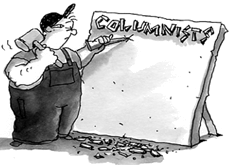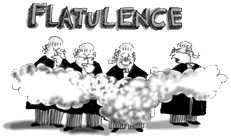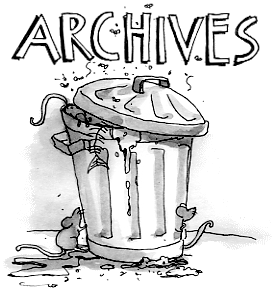Crown Prosecutor birched by CCA
 Court in the Act •
Court in the Act •  Friday, May 2, 2014
Friday, May 2, 2014 Margaret Cunneen's conduct as crown prosecutor in a murder trial resulted in a miscarriage of justice ... CCA reasons suppressed for 11 months ... Crown Prosecutor and Special Commissioner into Newcastle child sexual abuse ... Kate Lilly reports
IN April, Paul Darcey Armstong pleaded guilty to the manslaughter Filipe Flores in 1991.
It was his second bite at the apple.
In 2010, Armstrong was found guilty of Flores' murder – until the NSW Criminal Court of Appeal quashed the conviction last year.
The CCA's judgment was released in April after being suppressed for 11 months.
Justices Carolyn Simpson, Ian Harrison, and Geoffrey Bellew found the conduct of Crown Prosecutor Margaret Cunneen SC had contributed to a miscarriage of justice.
Background facts
On September 2, 1991, a security guard found the body of 27-year-old Filipe Flores behind an electricity substation at Woolloomooloo.
Earlier in the night, Flores had been drinking with friends at the Exchange Hotel. He was lying on his back with his trousers and underwear pulled down and injuries to his face, head and genitals
In 2008, DNA evidence linked Armstrong to the deceased and he was charged with Flores' murder. The crown case was based on circumstantial evidence, including:
- Armstrong's DNA under the deceased's fingernails;
- The security guard's evidence that a vehicle, bearing some similarity to one Armstrong owned at the time, was the leaving the area just before Flores was discovered;
- Armstrong's demeanour during his police interview and an alleged lie concerning his ownership of the vehicle;
- The evidence of Armstrong's former partner, who alleged Armstrong told her that he fought a hotel patron in September 1991;
- An alleged admission made by Armstrong to his father in an intercepted gaol phone call.
The appeal
Armstrong's appeal case was made out on two grounds:
- The evidence of a crown expert concerning the presence of blood under Flore's fingernails was used improperly by the prosecutor;
- Generally speaking, the crown prosecutor's conduct in her address to the jury gave rise to a miscarriage of justice.
Justice Harrison delivered the unanimous judgment. He had plenty to say about the prosecutor Cunneen's conduct – finding part of her address to the jury was ...
"offensive to the proper understanding of how a prosecutor should behave".
Deoxyribonucleic acid
Harrison noted there was no hard evidence that the DNA under the deceased's fingernails was in fact, blood.
The crown's expert, Dr Bruce, gave the following evidence:
Q. There was blood on these fingernail clippings of someone's, is that right?
A. That's correct.
Q. Can one say that the blood was either that of the deceased or that of the accused?
A. No, it is not possible to make that conclusion either way.
Q. Would you consider that it is likely that it is blood from one of those two people or both?
A. All I can say is blood is a likely source of DNA, but again I cannot categorically say whether blood was the likely source of the DNA that matched the victim or the accused.
Cunneen made much of this. For example, in her submissions she asked:
"The crown submits to you, ladies and gentlemen, it's blood from the accused and that's where the DNA comes from, not from anything else, blood and skin cells from the accused."
And later ...
"Nothing really explains any blood under the fingertips there, ladies and gentlemen ... no open wounds that would have bled freely enough to have stained nearly all the fingernails you might think."
Harrison noted there was no evidence there was blood under "nearly all" of the deceased fingertips, and indeed, no expert evidence that the only possible source of the blood was Armstrong.
He held Cunneen's statements to the jury were based on her opinion and that it was "unfair and improper" for the evidence to be characterised in this way.
Regarding the nature of DNA sample (was it blood or semen?), Cunneen suggested Armstong was trying to pass it off as "as some sort of toilet sexual activity because of [his] gay lifestyle".
His Honour chastised:
"The expression 'toilet sexual activity' was gratuitously pejorative and fundamentally irrelevant. It represented a crossing of the boundary between what was legitimate and what was illegitimate for a crown prosecutor to say to a jury."
Cunneen's conduct
As well as overstepping the line on the DNA question, Harrison found:
• Cunneen speculated when she suggested Armstrong fitted a witness's description of a man near the scene. The witness described a man between 5'6 and 5'8 in height. Although Armstrong is over 200cm tall, Cunneen argued he was crouched over and "skulking" to avoid detection. She told the jury he had "... been 6 foot 7 since he was 16 years of age, he knows how conspicuous a man of his height is and how you can get into trouble, 'The big bloke did it'."
• She suggested the deceased, "was clearly powerless, very, very outsized and overpowered by whoever it was who killed him". However, there was no evidence to support this.
• The intercepted telephone conversation was treated as a confession, rather than evidence demonstrating a consciousness of guilt.
• Based on evidence from Armstrong's former partner, Ms Webber, Cunneen told the jury he, "came home with scratch marks on 2 September 1991". However, Webber only gave evidence that she believed she observed scratch marks on Armstrong in about September 1991.
• Cunneen gave statements in her submissions amounting to an assertion that Armstrong had killed Flores, rather than merely suggesting the jury should conclude Armstrong was guilty of murder.
The CCA denied Armstrong's application for an acquittal, instead ordering a retrial.
However, last month the accused pleaded guilty to manslaughter.
See: Paul Darcey Armstrong v R
* * *
SIX months before the CCA's judgment Cunneen was appointed as Special Commissioner to inquire into and report on matters relating to the police investigation of child sexual abuse allegations in the Catholic Diocese of Maitland-Newcastle.
Her report is due by May 31.
See: Terms of Reference









Reader Comments